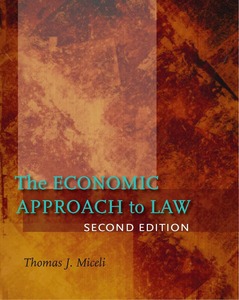Chapter 7
Historic landmarks and takings
All fifty states and most municipalities have enacted laws aimed at promoting the preservation of historic landmarks. In most cases, these laws do not require public acquisition of the landmark, but instead impose restrictions on how the owner can use it. For example, owners are typically required to maintain the exterior of the building in good repair and are not allowed to alter the structure without approval. Because of these restrictions, owners of designated buildings have occasionally sought to have the designation declared a taking under the Fifth Amendment, for which just compensation is due.
An economic analysis of this issue first asks what the public benefits are from historic designation. Although designation generally enhances the value of the building to the owner, there is a clear public good aspect to such an action, reflecting the benefit to the public from preservation of such landmarks. Thus, individual owners cannot generally be counted on the make the socially optimal decisions regarding their property. While this logic justifies the imposition of government regulations on owners to prevent them from inefficiently altering designated buildings, it does not address the question of who should pay the cost. Specifically, if maintaining the building in its historic state is not the best use of the building from the owner’s perspective, then why should he not be compensated for the lost income when he is forbidden from pursuing that use?
In terms of the economic analysis presented in the text, the twin issues are efficient decisions by owners of historic buildings, and efficient behavior by the government regarding what buildings to designate as historic. Based on the proposed threshold rule, denial of compensation is efficient if the government’s designation decision was made efficiently; that is, if the value of the building in its historic state is greater than its next best use. We showed that such a rule induces efficient behavior by both the government and the property owner.
One situation where this conclusion may not hold, however, is if the property owner anticipates that a designation might occur and is able to act preemptively by renovating the building. In that case, we argued that compensation must be paid in order to prevent premature action by the landowner. The situation is similar to a landowner filling a wetland in order to avoid its designation as such, thus foreclosing future development.
The most famous takings case involving an historic landmark was Penn Central Transportation Co. v. New York (438 U.S. 104, 1978), which concerned a New York City law that designated Grand Central Terminal as an historic landmark, thereby preventing the owner from constructing a multistory office building above it. The Supreme Court ruled that a taking had not occurred and therefore, that compensation was not due.
